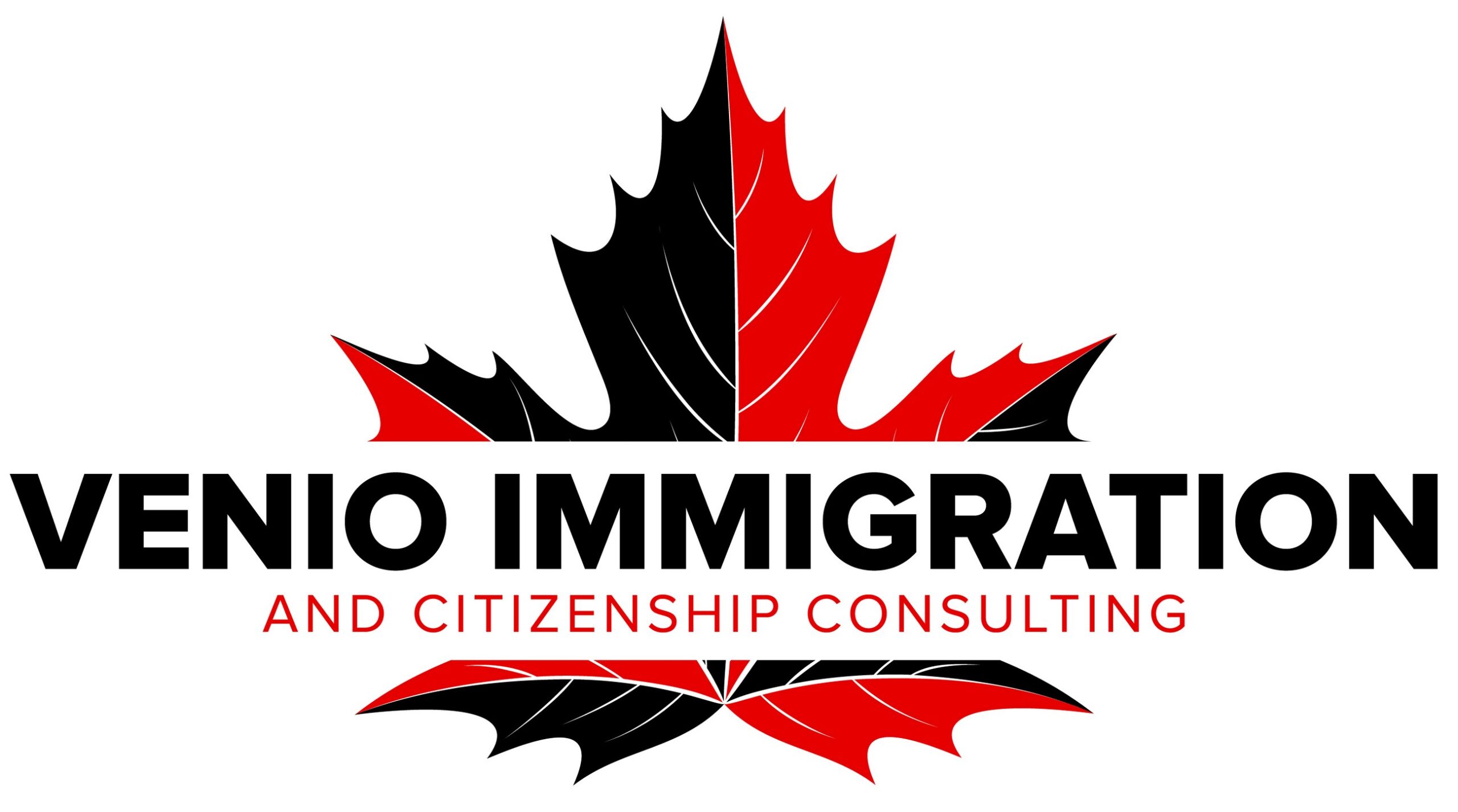The Procedural Fairness Letter in the Immigration Process

Have you received a procedural fairness letter from IRCC and are wondering about your next steps? Understanding the importance and appropriate response to this letter can be crucial to your immigration process. Discover essential strategies and tips to save your application and avoid refusal and inadmissibility.
Procedural fairness is a fundamental principle of Canadian administrative law that ensures that decisions by public authorities are made in a fair and transparent manner. It is in this spirit that Canadian immigration officers can send a procedural fairness letter when they have concerns about a pending immigration application. These letters provide an opportunity for the applicant to address the specific concerns raised by the officer, providing additional information or clarifying the details of the application. In this article, we'll look in detail at what a procedural fairness letter is, its importance within the Canadian immigration system, and how to respond effectively to one to maximize your chances of a successful immigration application.
The Nature and Scope of Procedural Fairness
Procedural fairness is one of the key aspects of the right to a fair trial. It concerns the rules and principles governing the conduct of proceedings, such as the right to be heard, the right to a public hearing, and the right to an impartial tribunal.
Procedural fairness goes beyond mere formal compliance with procedural rules. It incorporates qualitative aspects such as accessibility, understanding and involvement of the parties in the process. It is a flexible principle that adapts to the complexity of the case, the nature of the issues at stake and the specific circumstances.
The Procedural Fairness Letter: an essential tool
In some cases, the parties involved in proceedings may not fully understand their rights, obligations and what is at stake in the dispute. In this context, the procedural fairness letter plays a crucial role by providing clear and precise information, outlining the key points of the dispute and indicating the remedies available.
The letter can be addressed to one or all of the parties involved in the proceedings, as required. Its content will depend on the context, but it generally includes a detailed explanation of the party's rights and obligations, a description of the issues at stake in the dispute, and an indication of the next steps in the proceedings.
Such a letter must be written clearly and simply, so as to be easily understood by the recipient, whether a legal professional or not. It must also respect the principles of impartiality and objectivity, so as not to unduly influence the recipient's decisions.
The Procedural Fairness Letter in Practice
In practice, the procedural fairness letter serves as a guide for parties involved in proceedings. It establishes a dialogue between the parties and the judicial authorities, fostering a better understanding of the issues at stake and more active participation in the judicial process.
In addition, the letter can also serve to prevent potential breaches of the principles of procedural fairness. By informing the parties of their rights and obligations, and explaining the procedure, the letter can help avoid mistakes, misunderstandings and unnecessary litigation.
In addition, the procedural fairness letter can help reinforce the parties' confidence in the judicial system. By demonstrating that the process is transparent, fair and equitable, the letter can help alleviate parties' fears and concerns, and encourage them to participate more actively and confidently in the proceedings.
The procedural fairness letter is therefore a valuable tool that can greatly contribute to the achievement of a fair trial. However, it must be used appropriately and effectively to achieve this objective.
Effective use of the Procedural Fairness Letter
The procedural fairness letter must be used judiciously and strategically. It should not be used routinely or systematically, but rather according to the specific needs and circumstances of each case. For example, it can be particularly useful in complex cases where the stakes are high and the parties may have difficulty understanding the implications of the procedure.
In addition, the letter must be clear, concise and objective. It should avoid legal jargon and concentrate on providing practical information relevant to the recipient. It must also be written impartially, without favoring or disfavoring one party over another.
Finally, the procedural fairness letter must be timely. It should be sent early enough to allow the recipient to understand the issues and make informed decisions, but not so early as to cause confusion or misunderstanding.
Natural Justice and Procedural Fairness: Two Interconnected Concepts
Natural justice and procedural fairness are two fundamental concepts of the legal system that often overlap and complement each other. While procedural fairness focuses on process, natural justice is more oriented towards the fundamental principles and values that underpin these processes.
Natural Justice: A Set of Fundamental Principles
Natural justice is a legal concept that refers to fundamental principles of fairness and ethics that transcend specific laws and regulations. It comprises two main principles: the right to be heard (audi alteram partem) and the right to an impartial tribunal (nemo judex in causa sua).
The right to be heard guarantees each party the right to present its version of the facts and to contest the arguments of the other party. This includes the right to know the allegations against oneself, the right to respond to these allegations, and the right to present evidence.
The right to an impartial tribunal means that the decision must be taken by a person or body who has no personal interest in the outcome of the case, and who is free from any outside influence. This guarantees the impartiality and independence of the decision-making process.
Procedural Fairness: The Application of Natural Justice
Procedural fairness, as we have seen, concerns the rules and principles governing the conduct of the procedure. It ensures that the process is conducted in a fair, transparent and predictable manner. It also guarantees that each party has the opportunity to participate fully in the procedure.
Procedural fairness can thus be seen as the practical application of the principles of natural justice. It aims to implement these principles within the framework of a specific procedure, ensuring that the rights of each party are respected and that the process is conducted in a fair and transparent manner.
Consequently, procedural fairness and natural justice are two sides of the same coin. While natural justice establishes the fundamental principles, procedural fairness provides the practical means of implementing these principles in the context of a specific procedure.
It is in this context that the procedural fairness letter comes into play as a means of effectively communicating the principles of natural justice and procedural fairness, ensuring that all parties involved understand their rights and obligations under the procedure.
Use of Procedural Fairness by Canadian Immigration Officers (Provincial and Federal)
The principles of procedural fairness are applied at all levels of the Canadian legal system, including immigration processes at both federal and provincial levels. Immigration officers are bound by these principles when making decisions that affect the rights, privileges or interests of individuals.
Application of Procedural Fairness in Canadian Immigration
In the immigration context, procedural fairness implies the right of applicants to be informed of the allegations against them, to respond to those allegations, and to be heard by an impartial authority. Immigration officers are required to make decisions in a transparent, impartial and predictable manner, based on the facts of each case and giving applicants an adequate opportunity to present their case.
Procedural fairness applies to all stages of the immigration process, from application to final decision. It also applies to all forms of decision, from admissibility to entry into Canada, to the granting of refugee status, to deportation.
Role of the Procedural Fairness Letter in Canadian Immigration
In certain circumstances, a procedural fairness letter can be used to inform an applicant of concerns or questions that immigration authorities have about their application. This letter provides an opportunity for the applicant to address these concerns before a final decision is made.
The procedural fairness letter usually specifies the specific elements of the application that are of concern, provides a detailed explanation of why these elements are of concern, and invites the applicant to provide additional information or evidence to address these concerns.
Procedural fairness letters play a crucial role in ensuring that the principle of procedural fairness is respected in the immigration context. They enable applicants to clearly understand what is at stake in their application, to address the concerns of immigration authorities, and to participate fully in the decision-making process.
Procedural fairness is therefore a fundamental principle of the Canadian legal system, including the immigration process. Immigration officials, whether at the provincial or federal level, are obliged to respect this principle when making decisions that affect the rights of individuals. The procedural fairness letter is a valuable tool for ensuring that this principle is respected, by offering applicants a clear and fair opportunity to participate fully in the decision-making process.
Procedural fairness letters are used to establish a transparent dialogue between immigration officers and applicants. They highlight specific concerns relating to an application and give applicants the opportunity to provide additional information or evidence to address these concerns. In addition, they serve as a guarantee that the immigration process is conducted fairly, respecting the rights of every applicant.
However, it is important to note that the application of procedural fairness may vary according to the specific context and circumstances of each case. For example, the nature and extent of procedural fairness obligations may differ depending on the type of decision to be made, the stage of the proceedings, and the potential consequences of the decision for the claimant.
Ultimately, in the immigration context, procedural fairness, and by extension, the procedural fairness letter, is essential to ensure that every applicant has the opportunity to participate fully in the decision-making process, to clearly understand what is at stake in their application, and to effectively assert their rights and interests. This is a vital aspect of the right to a fair trial, a fundamental principle underpinning the Canadian legal system.
Procedural fairness, through the procedural fairness letter, creates a fairer, more transparent and more equitable immigration process, strengthening public confidence in Canada's immigration system. Ultimately, this fosters a more inclusive society, respectful of the rights of all individuals, regardless of their immigration status.
What a procedural fairness letter looks like in Canadian immigration (parts of the letter, content and form)
A procedural fairness letter in Canadian immigration is a formal document, often sent by the immigration officer handling a particular application. It is usually structured to give the recipient all the information needed to address the concerns set out in the letter.
Parts of the procedural fairness letter
- Header and Address Like all official documents, the procedural fairness letter begins with the letterhead of the issuing agency (e.g. Immigration, Refugees and Citizenship Canada), followed by the recipient's address.
- Object This is usually a short sentence indicating the purpose of the letter, for example, "Concerning your application for permanent residence" or "In response to your application for asylum".
- Introduction This section sets the context by identifying the applicant, the nature of the immigration request, and the purpose of the letter.
- Concerns This is the heart of the letter. It details the immigration officer's specific concerns about the application. For example, it may concern questions about the authenticity of a document, eligibility for a certain status, or concerns about admissibility.
- Request a reply In this section, the recipient is invited to respond to the concerns raised. The letter can specify the type of evidence or information required, as well as the deadline for responding.
- Conclusion Finally, the letter concludes with a reminder of the implications of a non-response or unsatisfactory response, and provides information on how to submit a reply.
Funds and Form of Procedural Fairness Letter
In terms of substance, the letter should be precise and explicit about the immigration officer's concerns and what is required of the recipient in response. It should avoid legal jargon wherever possible and strive to be clear and understandable.
In terms of form, the letter must be professional and respect the conventions of official correspondence. It must be written in a language the recipient can understand, and sent in such a way as to ensure receipt. It is also essential to keep a record of the letter and its receipt by the recipient.
The procedural fairness letter plays an important role in upholding the principles of natural justice and procedural fairness. It provides applicants with a fair opportunity to address concerns about their application, and contributes to the transparency and fairness of the Canadian immigration process.
Managing the response time to a procedural fairness letter
Once a procedural fairness letter is received, it is crucial to respond appropriately and on time. Deadlines vary depending on the nature of the issue raised in the letter, but they are generally quite strict, underlining the importance of responding promptly.
Understanding the Impartial Deadline
The procedural fairness letter will explicitly state the deadline for response, which generally begins to run from the date of receipt of the letter. This period may vary, but is generally 30 days. It is essential to understand that failure to meet this deadline may result in significant consequences, such as refusal of the immigration application.
Manage response time
As soon as you receive the letter, it's a good idea to start preparing a response. This often involves gathering additional documents or evidence to address the concerns raised in the letter. It may be necessary to consult a lawyer or immigration advisor to understand the implications of the letter and to develop an appropriate response.
If the applicant considers that he or she will not be able to respond within the deadline, it may be possible to request an extension. However, such a request must be justified and made well in advance of the expiry of the initial deadline. There is no guarantee that the extension will be granted, so every effort must be made to respond within the initial deadline.
Submit Response
Once the response is ready, it should be submitted in such a way as to prove that it was sent and received on time. It is advisable to keep a copy of all communications and documents sent.
In conclusion, respecting the deadline for responding to a procedural fairness letter is crucial in the Canadian immigration process. Effective time management and an appropriate response can help ensure that the immigration process runs smoothly and without unnecessary obstacles. It is always advisable to seek legal advice when receiving such a letter to ensure an adequate response that respects all the principles of procedural fairness.
Examples of concerns and how to address them concretely
Example 1: Problem of document authenticity
In some procedural fairness letters, the immigration officer may indicate doubts about the authenticity of one or more documents submitted as part of the application. For example, they may suspect that a marriage certificate, birth certificate or diploma is falsified or incorrect.
To address this concern, the applicant may wish to consider providing additional evidence to prove the authenticity of the document. This could include attestations from an official body that issued the document, photographs or testimonials corroborating the facts detailed in the document. In some cases, it may be necessary to obtain a new official document from the body that originally issued it.
Example 2: Concerns about criminal past
Another common concern is an applicant's criminal history. For example, an immigration officer may suspect that the applicant has committed a crime in his or her country of origin, which could make the applicant inadmissible to Canada.
In this case, the applicant could obtain a police certificate from his or her country of origin, attesting that he or she has no criminal record. In addition, if the applicant has been involved in a criminal case but has not been convicted, legal documents such as court records could help clarify the situation.
Example 3: Doubts about refugee status
In the case of a refugee claim, an immigration officer may have concerns about the veracity of the applicant's fear of persecution in his or her country of origin.
To address this, the applicant could provide additional evidence detailing the persecution suffered or feared. Such evidence could include written testimonies, international media reports corroborating conditions in the country of origin, or official documents such as police or court reports. Supporting documents from human rights organizations could also be useful.
It is important to note that these responses are general suggestions and that each case is unique. Therefore, it is always advisable to consult a lawyer or immigration consultant when preparing a response to a procedural fairness letter.
What happens after a procedural fairness letter is answered?
After the response to a procedural fairness letter has been sent, several events may occur. The course of events will depend on the quality of the response provided and how it addressed the concerns raised by the immigration officer.
Examining the answer
Once the response has been received, the immigration officer will review the information and evidence provided to see if it satisfactorily addresses the original concerns. The review may involve an assessment of the authenticity of the documents provided, consultations with experts or other officers, or other investigative steps necessary to evaluate the response.
Immigration decision
If the immigration officer feels that the response provides sufficient information to allay the initial concerns, the immigration application may then be approved, provided that all other eligibility criteria are met. In this case, the applicant will receive notification of approval and instructions on the next steps to be taken.
If, on the other hand, the immigration officer is not satisfied with the response, or if the applicant has not responded within the time limit, the immigration application may be refused. The applicant will receive a notification explaining the reasons for the refusal and providing information on the possibility of appealing the decision.
Appealing the decision
If the immigration application is refused, the applicant may be able to appeal the decision to a higher authority, such as the Immigration Appeal Board. This usually involves demonstrating that the immigration officer made an error of law or fact in processing the application.
It's important to note that the appeal process can be complex and usually requires the assistance of a lawyer or immigration consultant. In addition, there are strict deadlines for filing an appeal, so it's crucial to act quickly if this route is chosen.
In summary, receiving a procedural fairness letter is a crucial step in the Canadian immigration process. How an applicant responds can have a significant impact on the outcome of their immigration application. That's why it's essential to take this step seriously, and to consider obtaining professional help in preparing a response.
What happens if I don't respond to the procedural fairness letter on time?
Failure to respond to a procedural fairness letter in a timely manner can have serious consequences for your immigration application. The response time specified in the letter is there for a reason: it gives the applicant a defined period of time to address the concerns raised by the immigration officer.
Refusal of request
If you do not reply to the letter within the specified time, the immigration officer will make a decision on your application based on the information currently available. In most cases, this means that your application will probably be refused. This is because the immigration officer has not received additional information to clarify the concerns raised in the procedural fairness letter.
No automatic right of appeal
It's also important to note that not responding to a procedural fairness letter within the allotted time does not automatically give you the right to appeal. In fact, depending on the nature of your immigration application, you may not have the right to appeal the refusal decision.
Future challenges
In addition, failure to meet the response deadline may create difficulties for future immigration applications. The refusal of your application may be taken into account in the assessment of any future immigration application you may submit.
In conclusion, it is essential to respond to a procedural fairness letter on time. If you feel that you will not be able to respond within the deadline, it is advisable to contact a lawyer or immigration consultant immediately to discuss your options, which may include requesting an extension of the response deadline. However, it should be stressed that obtaining an extension is not guaranteed and will depend on the discretion of the immigration officer.
25 tips for responding effectively to a procedural fairness letter
- Please read carefully Read the procedural fairness letter carefully to understand the concerns raised by the immigration officer.
- Respect deadlines To avoid negative consequences, be sure to reply to the letter on time.
- Consult a professional Consider consulting a lawyer or an immigration consultant for advice on how to respond.
- Address all concerns Make sure you address all the concerns raised in the letter, not just some of them.
- Provide proof Provide evidence to support your answers, e.g. documents, photographs, testimonials, etc.
- Be precise Answer precisely and in detail. Leave no room for interpretation.
- Be honest Only provide truthful information. Any attempt to mislead the immigration officer could have serious consequences.
- Keep copies Keep copies of all correspondence and reply documents.
- Request an extension if necessary If you can't reply within the deadline, ask for an extension. Be sure to do so before the initial deadline expires.
- Double-check everything : Double-check all the information you provide to avoid errors.
- Stay respectful Even if you don't agree with the concerns raised, remain respectful in your response.
- Do your due diligence : Do all the research necessary to provide a complete and detailed answer.
- Organize your answer Make sure your answer is well-organized and easy to follow.
- Answer in writing Send your reply in writing and keep proof of posting.
- Stay positive Even though receiving a procedural fairness letter can be stressful, stay positive and focused on providing an adequate response.
- Take your time : While it's important to meet deadlines, take the time you need to prepare a thorough response.
- Be proactive Don't let problems pile up. If you have trouble responding, seek help.
- Don't make assumptions If you're not sure about something, ask for clarification rather than making assumptions.
- Follow the instructions Follow all the instructions in the letter to ensure that your reply is processed correctly.
- Keep in touch Keep in touch with your immigration officer or immigration office to stay informed of any updates or changes to your file.
- Document everything Keep a written record of all your interactions with the immigration authorities. This can be useful in the event of a dispute or misunderstanding.
- Keep relevant information close at hand Make sure you have easy access to all documents, reference numbers and other relevant information.
- Stay calm Managing a procedural fairness letter can be stressful, but it's important to stay calm and approach the situation in a rational, organized way.
- Don't make promises you can't keep Don't promise to provide additional information or documents unless you're sure you can.
- Stay committed Even after you've submitted your response, stay engaged with the process. You may need to provide additional information or answer additional questions.
In short, responding to a procedural fairness letter requires time, attention and a commitment to honesty and accuracy. Following these tips can help you navigate this complex process and increase your chances of a successful immigration application.
Conclusion
A procedural fairness letter is an essential tool in the Canadian immigration process, designed to ensure fairness and transparency. By giving applicants the opportunity to respond to immigration officers' concerns, it enables a more complete and balanced assessment of immigration applications. However, it is crucial to respond to these letters appropriately, on time and with clear and accurate information. Navigating this process can be complex, and it is often beneficial to seek the help of qualified professionals. With thoughtful preparation and response, you can maximize your chances of success in your immigration application and move closer to your Canadian immigration goals.







